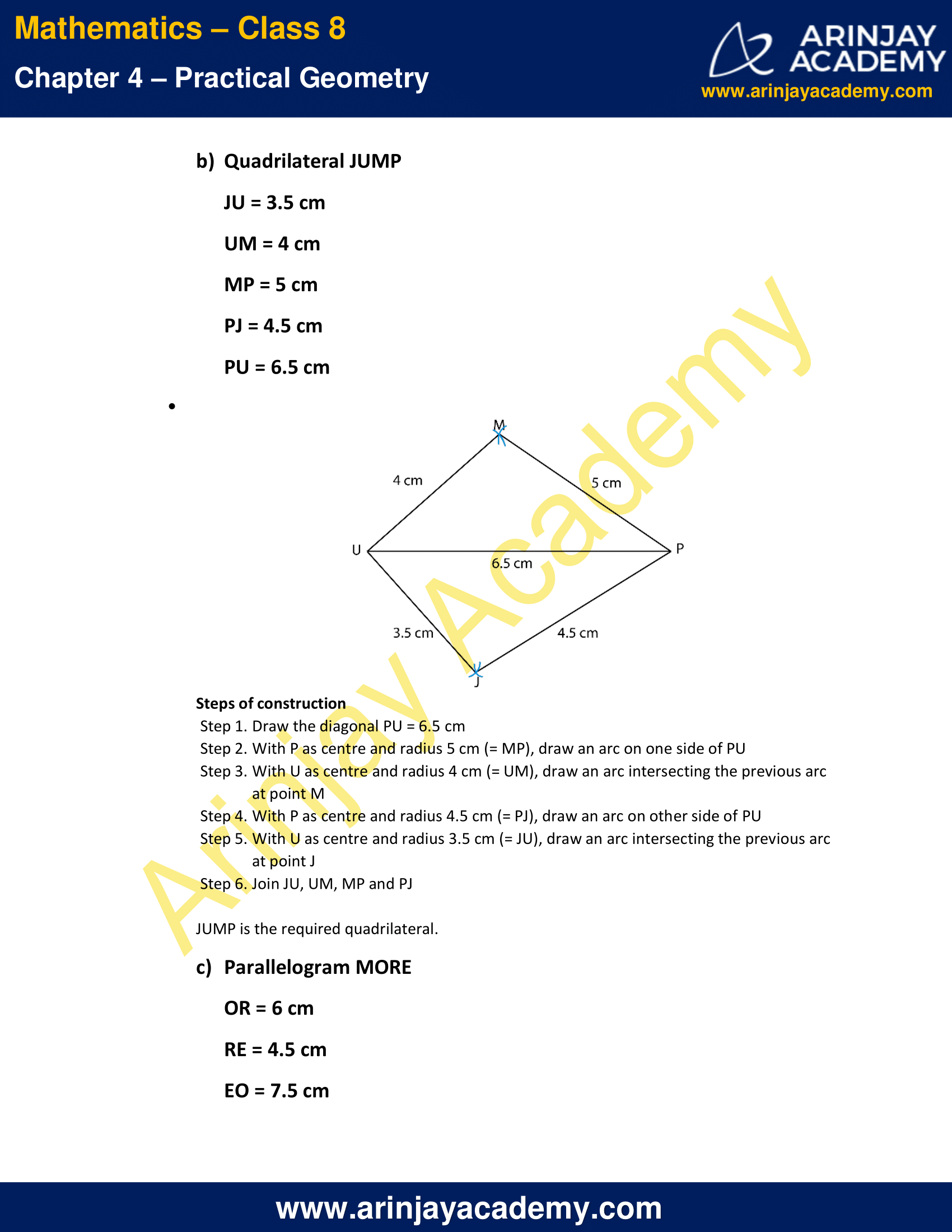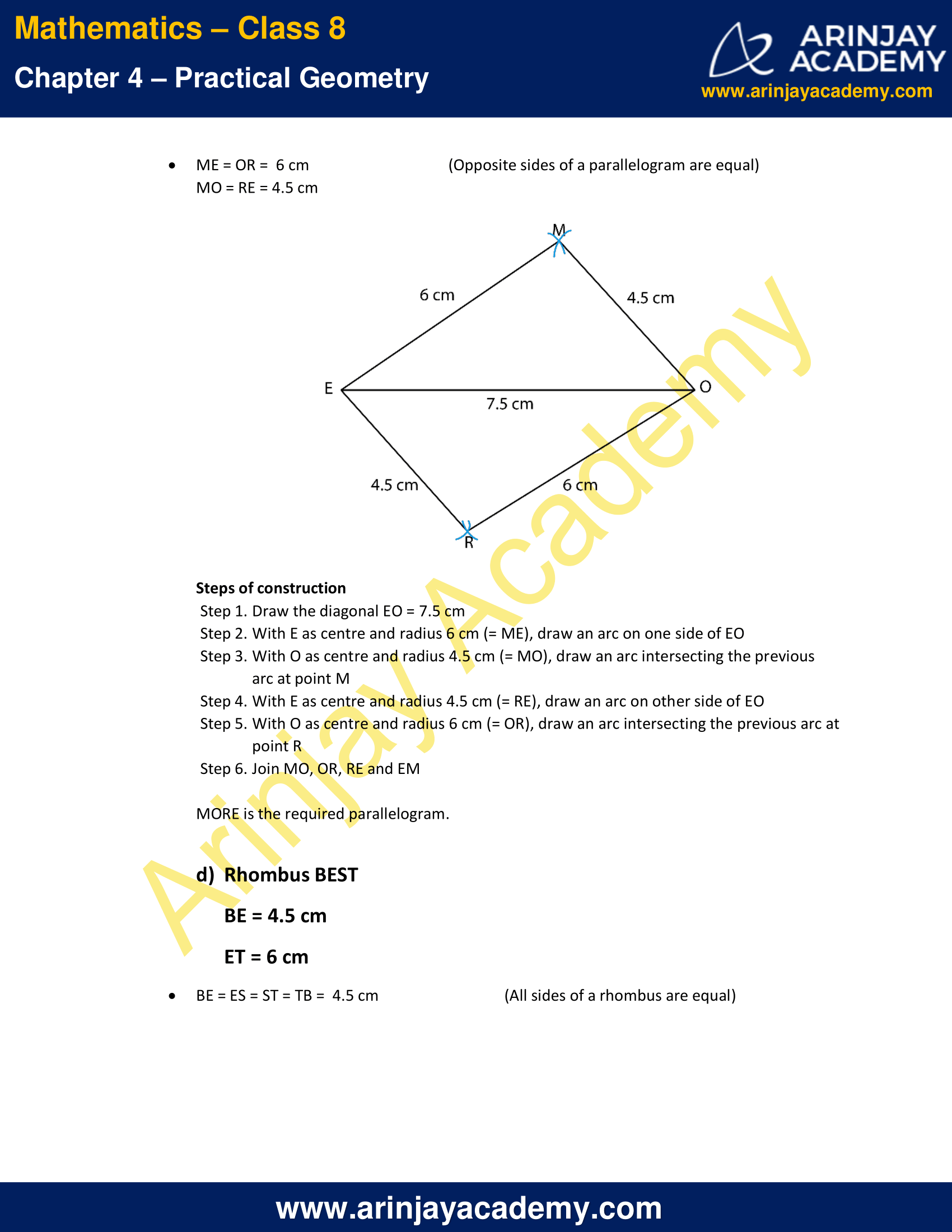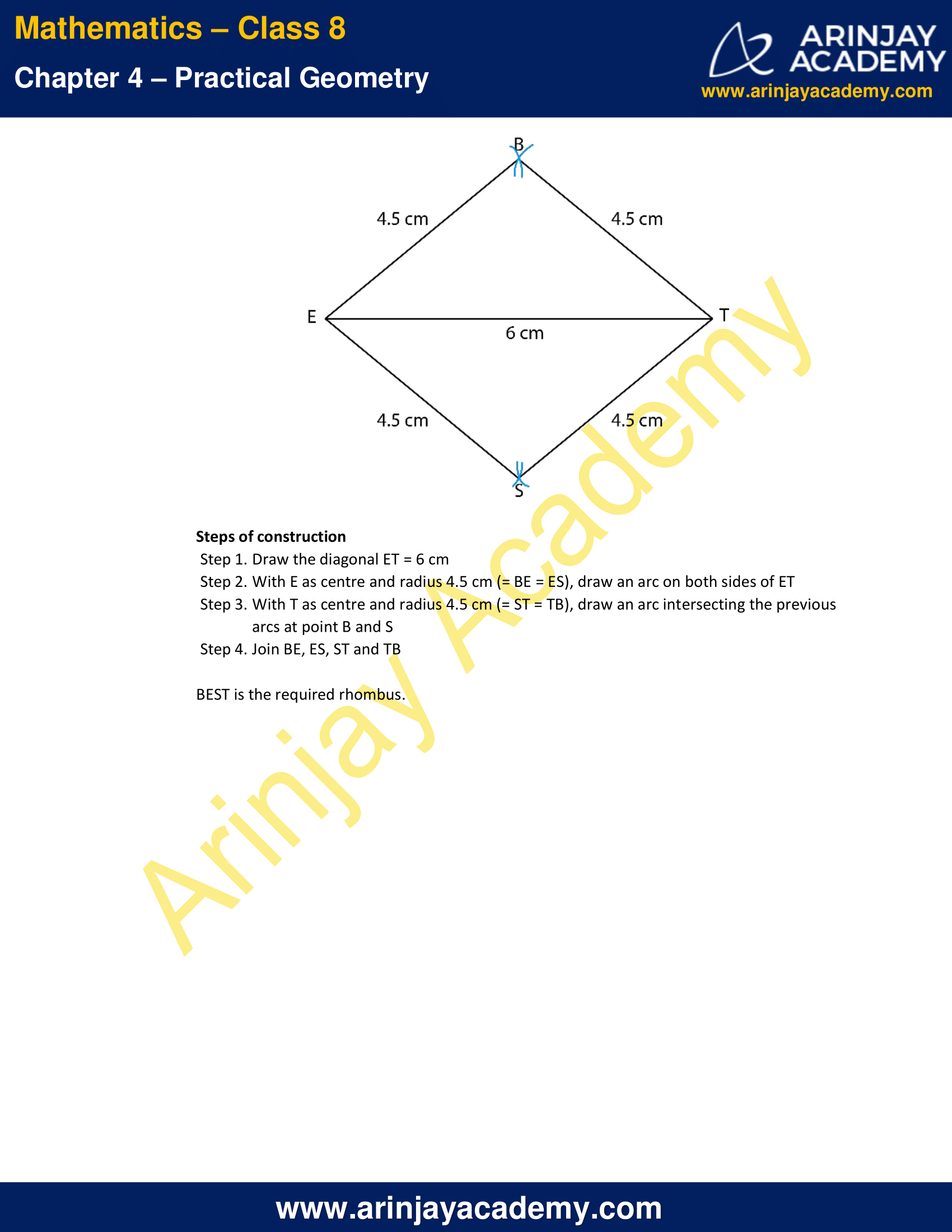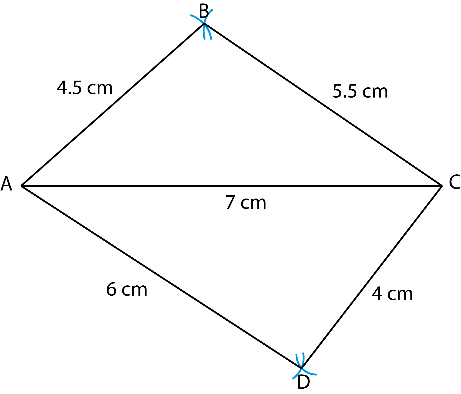NCERT Solutions for Class 8 Maths Chapter 4 Exercise 4.1 – Practical Geometry, has been designed by the NCERT to test the knowledge of the student on the topic – Constructing a Quadrilateral – When the lengths of four sides and a diagonal are given
NCERT Solutions for Class 8 Maths Chapter 4 Exercise 4.1 – Practical Geometry




NCERT Solutions for Class 8 Maths Chapter 4 Exercise 4.1 – Practical Geometry
1. Construct the following quadrilaterals
i. Quadrilateral ABCD
AB = 4.5 cm
BC = 5.5 cm
CD = 4 cm
AD = 6 cm
AC = 7 cm
Solution:

Steps for construction of a Quadrilateral
- Step 1. Draw the diagonal AC = 7 cm
- Step 2. With A as centre and radius 4.5 cm (= AB), draw an arc on one side of AC
- Step 3. With C as centre and radius 5.5 cm (= BC), draw an arc intersecting the previous arc at point B
- Step 4. With A as centre and radius 6 cm (= AD), draw an arc on other side of AC
- Step 5. With C as centre and radius 4 cm (= CD), draw an arc intersecting the previous arc at point D
- Step 6. Join AB, BC, AD and CD
ABCD is the required quadrilateral.
ii. Quadrilateral JUMP
JU = 3.5 cm
UM = 4 cm
MP = 5 cm
PJ = 4.5 cm
PU = 6.5 cm
Solution:

Steps for construction of a Quadrilateral
- Step 1. Draw the diagonal PU = 6.5 cm
- Step 2. With P as centre and radius 5 cm (= MP), draw an arc on one side of PU
- Step 3. With U as centre and radius 4 cm (= UM), draw an arc intersecting the previous arc at point M
- Step 4. With P as centre and radius 4.5 cm (= PJ), draw an arc on other side of PU
- Step 5. With U as centre and radius 3.5 cm (= JU), draw an arc intersecting the previous arc at point J
- Step 6. Join JU, UM, MP and PJ
JUMP is the required quadrilateral.
iii. Parallelogram MORE
OR = 6 cm
RE = 4.5 cm
EO = 7.5 cm
Solution:
ME = OR = 6 cm (Opposite sides of a parallelogram are equal)
MO = RE = 4.5 cm

Steps for construction of a Parellelogram
- Step 1. Draw the diagonal EO = 7.5 cm
- Step 2. With E as centre and radius 6 cm (= ME), draw an arc on one side of EO
- Step 3. With O as centre and radius 4.5 cm (= MO), draw an arc intersecting the previous arc at point M
- Step 4. With E as centre and radius 4.5 cm (= RE), draw an arc on other side of EO
- Step 5. With O as centre and radius 6 cm (= OR), draw an arc intersecting the previous arc at point R
- Step 6. Join MO, OR, RE and EM
MORE is the required parallelogram.
iv. Rhombus BEST
BE = 4.5 cm
ET = 6 cm
Solution:
BE = ES = ST = TB = 5 cm (All sides of a rhombus are equal)

Steps for construction of a Rhombus
- Step 1. Draw the diagonal ET = 6 cm
- Step 2. With E as centre and radius 4.5 cm (= BE = ES), draw an arc on both sides of ET
- Step 3. With T as centre and radius 4.5 cm (= ST = TB), draw an arc intersecting the previous arcs at point B and S
- Step 4. Join BE, ES, ST and TB
BEST is the required rhombus.
The next Exercise for NCERT Solutions for Class 8 Maths Chapter 4 Exercise 4.2 – Practical Geometry can be accessed by clicking here
Download NCERT Solutions for Class 8 Maths Chapter 4 Exercise 4.1 – Practical Geometry

3 thoughts on “NCERT Solutions for Class 8 Maths Chapter 4 Exercise 4.1 – Practical Geometry”
Very usefull
Please log in
very help full for me
This is very useful website this better than other icant understand maths in other website but in this website I can easily understand maths
All of you please login to this website this is very useful for you